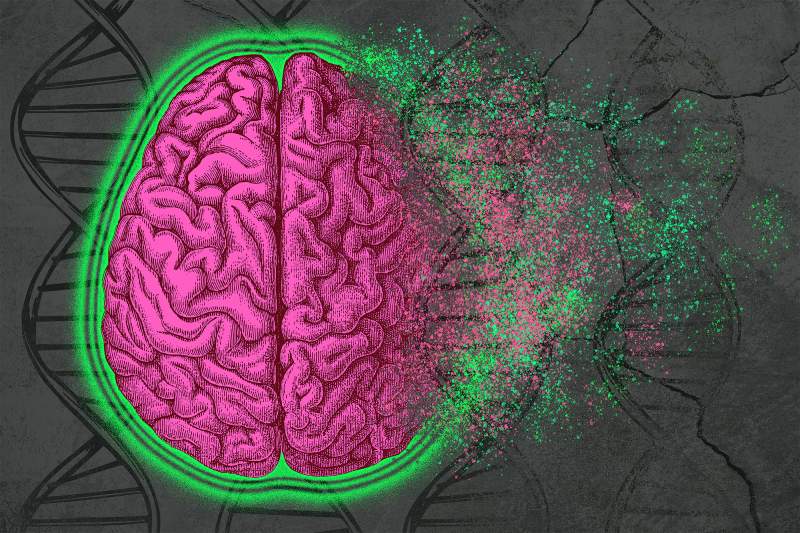The most common cause of dementia and disability in older adults is Alzheimer’s disease. In order to improve the quality of life for those who have Alzheimer’s disease, new treatments are desperately needed as the number of cases of the condition is rising.
Cells include an enzyme called PDE4B that breaks down cyclic AMP, a chemical that controls a number of cellular functions. The UK team examined whether blocking PDE4B activity might prevent Alzheimer’s disease pathology and be a helpful treatment strategy, based on an Australian study that found the PDE4B gene to be a risk factor for Alzheimer’s disease. In order to achieve this, they inserted a gene for decreased PDE4B activity into a mouse model of Alzheimer’s disease (AD), which causes amyloid plaques to form in the brain, a major pathological characteristic of the illness.
In maze testing, the researchers saw that AD mice displayed memory problems; however, memory was not affected in AD animals that had genetically decreased PDE4B activity. The scientists discovered that AD mice had poor glucose metabolism, which is similar to what is seen in AD patients, using functional brain imaging. Glucose is the primary source of energy in the brain. On the other hand, AD mice with genetically decreased PDE4B activity displayed normal brain glucose metabolism.
The researchers next examined the brain’s levels of gene and protein expression to gain an understanding of the underlying mechanisms. This revealed that AD mice’s brains had elevated inflammation, similar to what is observed in Alzheimer’s patients; however, AD mice with genetically decreased PDE4B activity had decreased inflammation.
Numerous other proteins implicated in the pathophysiology of Alzheimer’s disease showed comparable results. All things considered, our findings imply that decreasing PDE4B activity may be a helpful strategy for treating Alzheimer’s disease, while additional investigation is required to support the use of medications that target the enzyme.
“Reducing the activity of the PDE4B enzyme had a profound protective effect on memory and glucose metabolism in the AD mouse model, despite these mice showing no decrease in the number of amyloid plaques in the brain,” stated senior researcher Dr. Steven Clapcote of the University of Leeds. This suggests the possibility that decreasing PDE4B activity could guard against cognitive impairment in dementias other than Alzheimer’s, like Huntington’s disease.”
“These results offer real hope for the development of new treatments that will benefit patients with Alzheimer’s disease in the future,” said Dr. Neil Dawson, a co-author of the article from Lancaster University. It was surprising to learn that in AD mice, a little 27% reduction in PDE4B activity might significantly improve memory, brain function, and inflammation. In order to determine whether PDE4B inhibitors are effective in treating Alzheimer’s disease, the next step is to see if they have the same positive effects in the AD animal model.

 General Medicine2 weeks ago
General Medicine2 weeks ago
 General Medicine2 weeks ago
General Medicine2 weeks ago
 Diabetology1 week ago
Diabetology1 week ago
 Diabetology1 week ago
Diabetology1 week ago
 Diabetology7 days ago
Diabetology7 days ago
 Diabetology7 days ago
Diabetology7 days ago
 Diabetology1 week ago
Diabetology1 week ago
 Diabetology4 days ago
Diabetology4 days ago

















